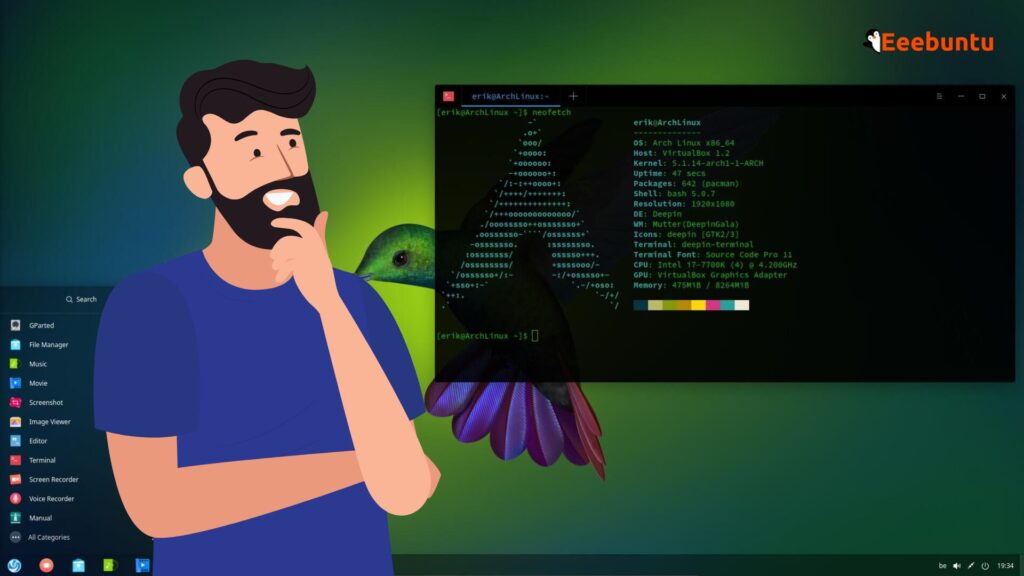In the ever-evolving landscape of Linux distros, stability stands as a hallmark of excellence. For those seeking the most stable and robust Linux distro, the right choice can make all the difference.
In this article, I am going to cover the most stable Linux distributions available. This article is a part of our ongoing series of best Linux distros.
We’ll delve into the key factors that contribute to their unwavering reliability, helping you make an informed decision for your computing needs.
So, without any further ado, let’s get started –
Debian Linux
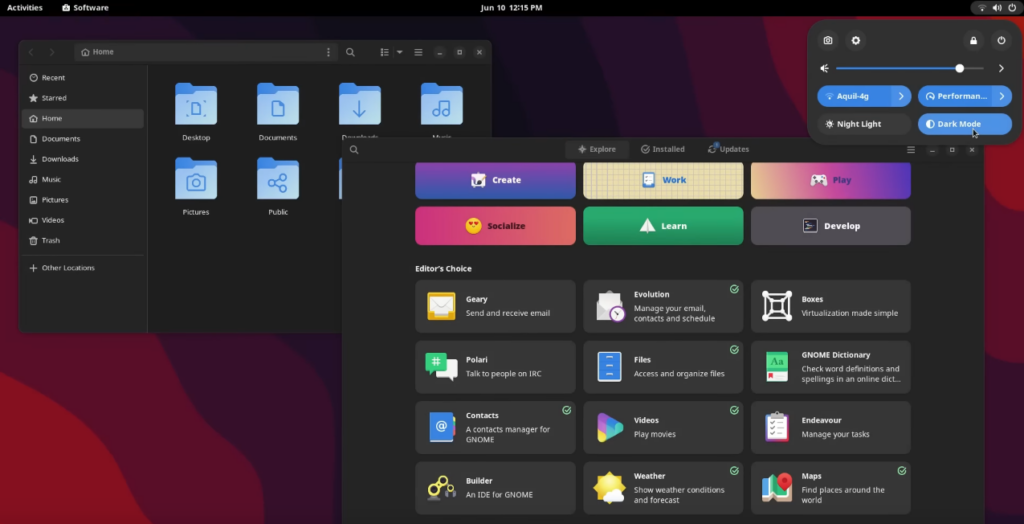
Debian Linux, an influential pioneer among Linux distributions, is known for its unwavering stability and comprehensive package management.
It exemplifies the balance between stability and innovation, making it an exceptional choice for personal and enterprise use cases alike.
Key Features
- Robust Stability: Thorough testing results in a stable repository, minimizing crashes and failures.
- Extensive Software Repository: Over 51,000 packages cater to diverse needs.
- Automated Dependency Resolution: Simplified software installation and upkeep.
- Varied Installers: Choices for customized or user-friendly installations.
- Broad Hardware Support: Ensures seamless performance across devices.
- Diverse Flavors: Multiple flavors offer different kernel options.
- Community-Driven: Collaboration-driven development model.
- Long-Term Support (LTS): Extended security updates enhance suitability for critical systems.
- Open-Source Philosophy: Rooted in the Debian Social Contract and Free Software Guidelines.
Linux Mint
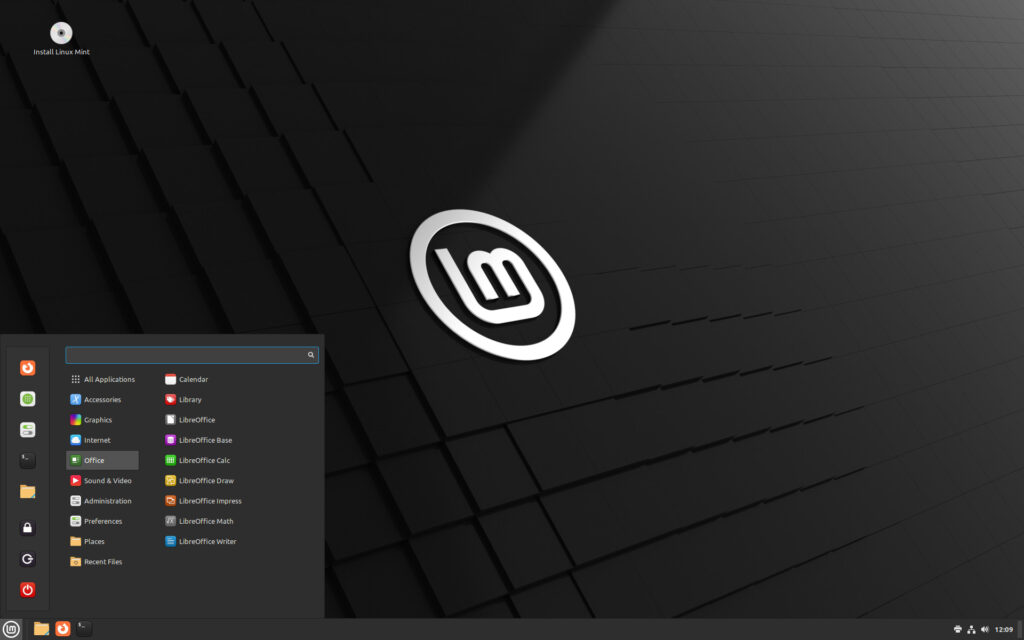
Linux Mint, renowned for its user-friendly experience and polished interface, has captured the hearts of Linux enthusiasts worldwide.
Linux Mint strikes an impeccable balance between aesthetic refinement and functional excellence, making it an ideal choice for users seeking a smooth and delightful Linux experience.
Key Features
- Intuitive User Interface: Cinnamon desktop offers a familiar, user-centric layout.
- Software Manager: Simplifies software installation and updates.
- Driver Manager: Streamlines the management of hardware drivers.
- Desktop Customization: Extensive customization options for personalization.
- Multimedia Support: Out-of-the-box multimedia codecs enhance media playback.
- Update Strategy: Offers a choice between stability and the latest software.
- Backup Tool: User-friendly backup utility for safeguarding data.
- Software Sources Tool: Effortlessly manage software repositories.
- Community Engagement: Active community support and feedback integration.
Ubuntu
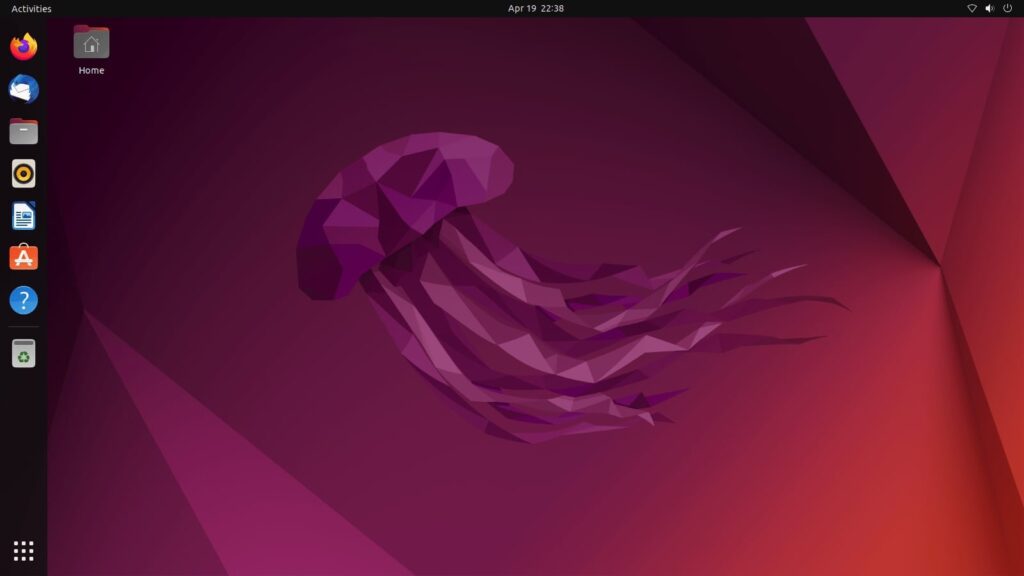
Ubuntu is one of the Linux distros that has brought Linux to a broader audience through its focus on accessibility and ease of use. Plus, there is a free Ubuntu Pro subscription that you could opt to get 10 years of security from Canonical.
Ubuntu’s commitment to accessibility and user-friendliness has elevated it to a position of prominence, bridging the gap between newcomers and seasoned Linux users. Whether you’re a developer, designer, or casual user, Ubuntu’s inclusive approach has something to offer for everyone. You can read our Ubuntu 22.04 detailed review to decide whether you should go with it.
Key Features
- User-Centric Design: Ubuntu’s GNOME-based interface emphasizes simplicity and ease of navigation.
- Software Center: A centralized hub for software installation and management.
- Regular Releases: A predictable six-month release cycle for new features and improvements.
- LTS Releases: Long-Term Support versions for extended stability and reliability.
- Ubuntu Snap: Package format for secure, easily updatable software.
- Cloud Integration: Ubuntu One offers seamless cloud storage and synchronization.
- Widespread Compatibility: Comprehensive hardware support for a variety of devices.
- Community Backing: Active community forums and resources for support and collaboration.
- Ubuntu Flavors: Variants like Kubuntu, Xubuntu, and Lubuntu cater to diverse preferences.
We have covered a detailed guide on how to install Ubuntu on a Windows machine. You can follow this guide to test Ubuntu on your system, and if you like it, you can replace your Windows OS with Ubuntu.
Slackware Linux
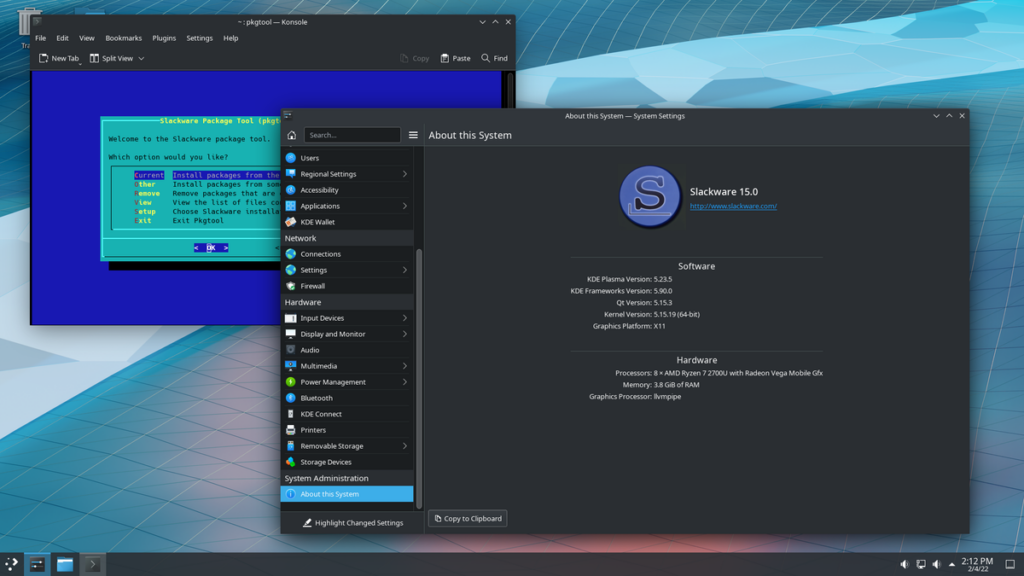
Slackware Linux holds the distinction of being one of the earliest distributions.
Slackware’s steadfast adherence to its roots and its “do-it-yourself” ethos has fostered a dedicated user base that values hands-on control and a deep understanding of its system. For those seeking a stable and educational Linux experience, Slackware remains a remarkable choice.
Key Features
- Minimalist Approach: Emphasis on simplicity and minimal modifications to upstream software.
- Text-Based Installer: Provides granular control during installation.
- Unix-Like Philosophy: Retains the Unix philosophy of manual configuration and transparent system management.
- Stable Release Cycle: Prioritizes stability over frequent updates.
- Traditional System Init: Uses the classic System V init system for system initialization.
- Package Management: Relies on the simple yet effective “pkgtools” package management system.
- Community and Documentation: Active user community and extensive official documentation.
- Educational Value: Excellent for learning about the inner workings of Linux systems.
- Customization: Encourages users to build their own tailored systems.
OpenSUSE
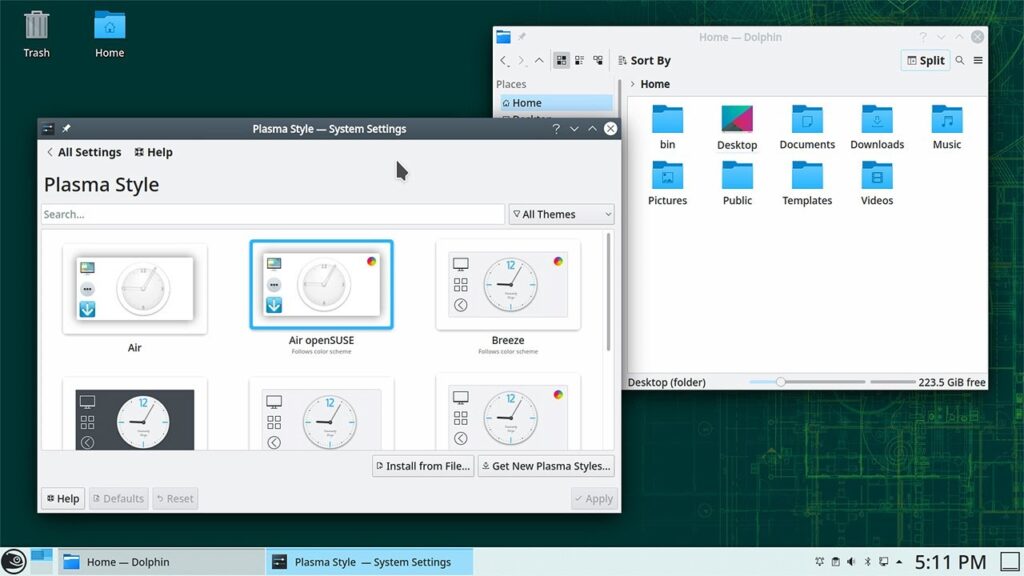
OpenSUSE has carved its niche in the Linux landscape. Its dual-edition approach and commitment to cutting-edge technologies ensure a versatile and dynamic experience for users across a wide spectrum of interests.
Whether you’re an enthusiast, developer, or system administrator, OpenSUSE’s flexibility stands as a testament to its dedication to user choice and innovation.
Key Features
- Two Distinct Versions: Offers Leap (stability-focused) and Tumbleweed (rolling-release) editions.
- YaST Control Center: Comprehensive system configuration tool simplifying administration.
- Btrfs File System: Default choice for Leap, offering advanced features like snapshots.
- OBS – Build Service: Empowers users to create and distribute software packages.
- Kubic Project: Focuses on container orchestration and microservices with Kubernetes.
- Snapper Tool: Enables easy management of system snapshots and rollbacks.
- Open Build Service: A platform for building and distributing packages across various Linux distributions.
- Desktop Variety: Supports various desktop environments, including KDE Plasma and GNOME.
Elementary OS

Elementary OS stands as a testament to the belief that beauty and functionality can coexist in the Linux realm. Its commitment to design, user experience, and privacy has resulted in an operating system that not only looks inviting but also performs efficiently.
For those who value aesthetics and a refined workflow with stable performance, Elementary OS offers a compelling choice in the Linux landscape.
Key Features
- Pantheon Desktop: A thoughtfully designed, intuitive, and aesthetically pleasing desktop environment.
- Consistent Design Language: Uniform and elegant visual elements create a seamless user experience.
- AppCenter: A curated software center featuring carefully vetted and well-designed applications.
- Privacy-Focused: Built-in privacy features and no tracking in the operating system.
- Vala Programming Language: Enhances the development of native applications for the platform.
- Granular System Settings: Empowers users with fine-tuned control over system configurations.
- Focus on User Experience: Thoughtful animations and interactions elevate the overall feel.
- Flatpak Integration: Access to a wide range of applications via the Flatpak package format.
Fedora

Fedora has consistently pushed the boundaries of technology and open-source collaboration. Its emphasis on innovation and its commitment to staying at the forefront of open-source technologies make it an attractive choice for developers, enthusiasts, and those who appreciate the latest advancements in the Linux ecosystem.
With its various editions catering to different use cases, Fedora remains an influential force in the world of Linux distributions.
Key Features
- Fast-Moving Release Cycle: Frequent releases with up-to-date software and features.
- Fedora Workstation: Focuses on providing a polished desktop experience for developers and users.
- Modularity: Allows isolation and independent updates of software components.
- Fedora Silverblue: Immutable desktop for enhanced security and software management.
- Fedora Server: Designed for server applications with minimalistic installations.
- Fedora Cloud: Optimized for cloud deployments and containerized applications.
- Fedora CoreOS: Designed for running containerized workloads securely at scale.
- COPR Build Service: Personal package repositories for individual projects.
- RPM Packaging: Utilizes RPM packaging format for efficient software distribution.
Arch Linux

Arch Linux has garnered a dedicated following among Linux enthusiasts who relish control and hands-on learning. Its focus on simplicity, customization, and active user involvement appeals to those who relish the intricacies of their operating system.
Whether you’re seeking a platform to fine-tune your system to perfection or aiming to deepen your Linux knowledge, Arch Linux presents an engaging and educational journey.
Key Features
- Rolling Release Model: Continuous updates ensure the latest software without major version upgrades.
- Arch User Repository (AUR): A vast community-driven repository for user-contributed packages.
- Minimal Installation: Offers a barebones system, allowing users to build their desired environment.
- Pacman Package Manager: Efficient and straightforward package management.
- Arch Wiki: An invaluable resource for in-depth documentation and troubleshooting.
- Flat Learning Curve: Encourages users to understand and configure their systems from the ground up.
- KISS Philosophy: The “Keep It Simple, Stupid” approach fosters a straightforward and elegant design.
- Arch Build System (ABS): A source-based package build system for advanced users.
Closing Comments
As I conclude this article, it’s evident that the open-source world of Linux offers a diverse array of choices, each tailored to different needs and preferences.
Whether you prioritize rock-solid stability, cutting-edge innovation, user-friendly interfaces, or hands-on customization, there’s a Linux distribution that would easily align with your goals.
From Debian’s legacy of reliability to the elegant experience provided by Elementary OS, from the innovation-driven Fedora to the DIY ethos of Arch Linux, these distributions exemplify the rich tapestry of options available to Linux enthusiasts. The common thread that unites them all is the spirit of collaboration, transparency, and the shared commitment to empowering users with the freedom to shape their computing experiences.
No matter which distribution resonates with you, the world of Linux continues to be a testament to the power of open-source principles and the limitless potential of a vibrant community. Whether you’re a seasoned user or just starting your journey, the world of Linux welcomes you to a realm of endless exploration, learning, and creativity.
FAQs
What’s the most stable Linux distro?
The question of the “most stable” Linux distribution can vary depending on individual needs and preferences, as well as the context in which the distribution is being used. However, some Linux distributions are often recognized for their stability due to their testing processes, release cycles, and focus on reliability.
The distros mentioned above are considered the most stable Linux distro at the current time.
Best Linux distro for low-end PC?
Some of the best Linux distros for low-end PCs are Lubuntu, Xubuntu, Puppy Linux, AntiX, Linux Mint, and Debian with minimal desktop.

